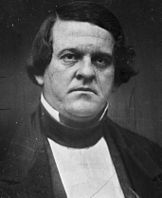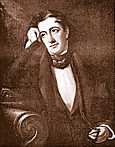United States House election, 1848
|
|
|||||||||||||||||||||||||||||||||||||||||||||||||||||
|---|---|---|---|---|---|---|---|---|---|---|---|---|---|---|---|---|---|---|---|---|---|---|---|---|---|---|---|---|---|---|---|---|---|---|---|---|---|---|---|---|---|---|---|---|---|---|---|---|---|---|---|---|---|
|
|||||||||||||||||||||||||||||||||||||||||||||||||||||
|
All 233 seats to the United States House of Representatives 117 seats were needed for a majority |
|||||||||||||||||||||||||||||||||||||||||||||||||||||
|
|||||||||||||||||||||||||||||||||||||||||||||||||||||
|
|||||||||||||||||||||||||||||||||||||||||||||||||||||
Elections to the United States House of Representatives for the 31st Congress were held at various dates in each state between August 7, 1848 (Arkansas, Illinois, Iowa and Missouri) and November 6, 1849 (Mississippi). California also elected two Representatives at-large on November 11, 1849, in anticipation of statehood. They were seated September 11, 1850.
The Democrats gained one seat, while the Whigs lost their majority they had gained just two years earlier in the election of 1846. This was the first election in the U.S. House that resulted in no party gaining an overall majority of seats.
The Mexican–American War, which ended with an American victory several months before the election, was a big factor in the election. Zachary Taylor, a general in the war, was elected president as a Whig, but the Democrats, who instigated the war, were rewarded for their victory by regaining the largest share of House seats. The fiercely abolitionist Free Soil Party was a huge spoiler in this election, earning 9 seats in districts that generally supported Whig politicians. At the same time, the American (Know Nothing) Party continued to be a marginal force after their breakthrough in the 1844 elections, managing to win just 1 seat in 1848, just as they had previously in 1846. In addition, the new state of California opted to elect an Independent, George Washington Wright, as one of its two representatives, in elections held in 1849.
...
Wikipedia




